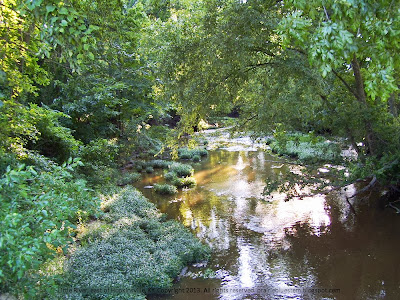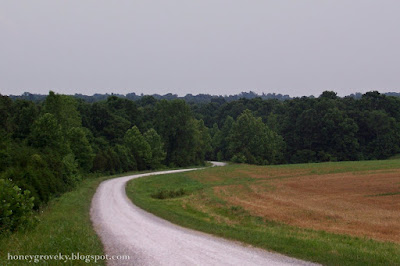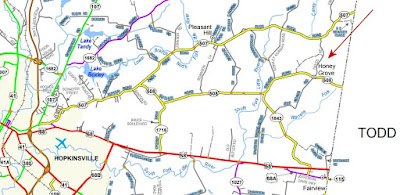 |
| A partially harvested cornfield |
Weather Underground predicts that our temperatures will drop into the 70s by the end of next week. I hope that comes to pass. I don't care to endure any more days in the 90s or even the near-90s.
Proof of impending autumn has been cited every day for several weeks on the Weather Underground website: ragweed pollen is high.
A few days ago, I was amused to read about someone's first sighting ever of a whirlwind. A woman described a spinning wind that appeared out of nowhere and threw dry leaves around and around in the air. What was it? She had never seen anything like it!
Supposedly whirlwinds occur throughout the year, but I think of them as a fall phenomenon. I suppose they are most noticable and noisy when vegetation is dry and crunchy .
A sure sign of the season is that people have started wondering what winter will bring. Dr. Lucky Pittman, a veterinarian at Breathitt Veterinary Diagnostic Lab in Hopkinsville, has cut some persimmon seeds from his orchard, and the seeds all had spoons in them. (I received a report of the seed cutting from our daughter, a serologist at Breathitt.) Spoons are a symbol of shovels -- in other words, we should prepare for a snowy winter.
I have ordered and received my milkweed seed. When the weather gets a bit cooler, I will plant it. My plan is to rake the soil, lightly scatter a seed-and-sand mixture across it, and then walk on the sandy areas to push the seeds into contact with the soil (but not cover them.) This method is said to result in an even distribution of seeds. Nature will give the seeds a cold treatment this winter, and they will germinate next spring and bloom next summer, if all goes well. This is all for t
he monarch butterflies.

























